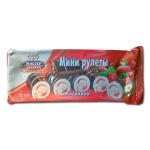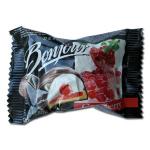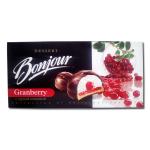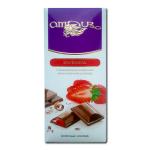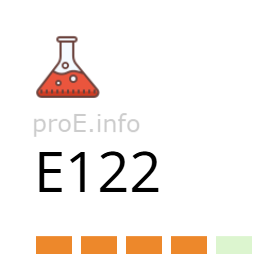
Other names for the additive (synonyms)
General Information
Azorubine (Carmoisine) is a food additive E122 that belongs to the group of azo dyes (synthetic red colorants).
Azorubine is derived from coal tar. The colorant E122 was developed as an alternative to natural dyes (such as carmine). It provides stable product coloring, high solubility, and resistance to light, pH, and temperature.
Azorubine is produced through synthetic organic synthesis. The starting material is aniline or its derivatives containing an amino group. Aniline itself is produced from benzene, which is derived from petroleum products.
The chemical formula of additive E122 is C20H12N2Na2O7S2.
The colorant E122 began to be widely used in the food industry in the 1950s–1960s. It is usually supplied to manufacturers in the form of its disodium salt — a powder ranging from red to dark burgundy.
Effects on the Body
Risks of additive E122
Numerous studies on food additive E122 have revealed several potential negative effects on human health.
Consumption of carmoisine may lead to allergic reactions such as skin rashes. People with bronchial asthma and intolerance to anti-inflammatory and antipyretic drugs (aspirin-induced asthma) should be especially cautious when consuming products containing E122.
Recent studies conducted by the University of Southampton on behalf of the UK Food Standards Agency (FSA) showed that consumption of products containing E122 may increase hyperactivity and reduce attention span in children.
Based on these findings, since 2010, foods and beverages in the EU that contain one or more of the following colorants — Sunset Yellow (E110), Quinoline Yellow (E104), Carmoisine (E122), Allura Red (E129), Tartrazine (E102), or Ponceau 4R (E124) — must carry the following warning: “Name or E number of the additive: may have an adverse effect on activity and attention in children.”
In addition, in several studies on rats and mice, Azorubine showed toxicity at high doses. It negatively affected antioxidant status, inflammatory biomarkers, biochemical enzymes, and liver histology in animals.
The World Health Organization and the FAO have established an acceptable daily intake (ADI) for azorubine at 4 mg per kg of body weight. This limit was confirmed by the EFSA Panel on Food Additives in its updated evaluation of additive E122 in 2015.
Benefits of additive E122
Due to its synthetic origin, additive E122 is not naturally present in living organisms. There is currently no scientific evidence of any health benefits of azorubine.
Uses
In the food industry, colorant E122 is used to color products in red shades. It is most commonly found in jams, syrups, jellies, confectionery products, drinks, and red-colored juices. E122 is often used in blends with other colorants to create complex colors (such as green, brown, purple, etc.).
Outside the food industry, azorubine (colorant E122) is also used in cosmetics, perfumery, and the production of pharmaceuticals.
Legal Status
Colorant E122 is permitted for use in the European Union, provided that products are labeled in accordance with Article 24 of Regulation (EC) No 1333/2008 on food additives.
Azorubine is also authorized for use in the food industry in Ukraine and most other countries around the world.
However, E122 is banned in food products in Japan, Canada, Norway, Austria, Sweden, and the United States.
